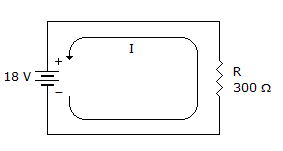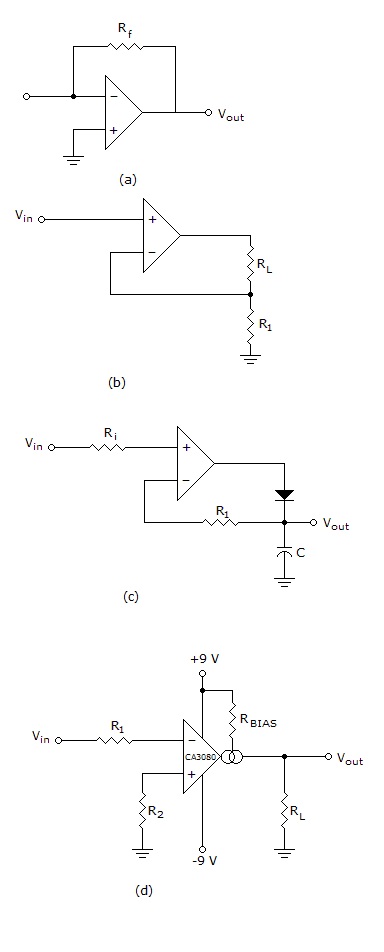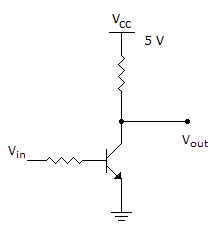Online Electronics Test - Electronics Test 6
Instruction:
- This is a FREE online test. Beware of scammers who ask for money to attend this test.
- Total number of questions: 20.
- Time allotted: 30 minutes.
- Each question carries 1 mark; there are no negative marks.
- DO NOT refresh the page.
- All the best!
Marks : 2/20
Total number of questions
20
Number of answered questions
0
Number of unanswered questions
20
Test Review : View answers and explanation for this test.
1.

If the voltage in the given circuit was cut in half, what would the current equal?
Your Answer: Option
(Not Answered)
Correct Answer: Option
Discuss about this problem : Discuss in Forum
Learn more problems on : Ohm's Law
2.
The voltage drop across a resistor is simply a difference of potential across that resistor.
Your Answer: Option
(Not Answered)
Correct Answer: Option
Discuss about this problem : Discuss in Forum
Learn more problems on : Ohm's Law
3.
The ___ rating of a resistor will increase with an increase in the surface area of the resistor.
Your Answer: Option
(Not Answered)
Correct Answer: Option
Discuss about this problem : Discuss in Forum
Learn more problems on : Ohm's Law
4.
These components are in series.


Your Answer: Option
(Not Answered)
Correct Answer: Option
Discuss about this problem : Discuss in Forum
Learn more problems on : Series Circuits
5.
After a capacitor has charged for 1 tc, what percentage of current remains in the resistor?
Your Answer: Option
(Not Answered)
Correct Answer: Option
Discuss about this problem : Discuss in Forum
Learn more problems on : Capacitors
6.
A practical inductor
Your Answer: Option
(Not Answered)
Correct Answer: Option
Discuss about this problem : Discuss in Forum
Learn more problems on : Inductors
7.
Which coil would be used as a step-up transformer primary if coil number 1 has 100 more turns than coil number 2?
Your Answer: Option
(Not Answered)
Correct Answer: Option
Discuss about this problem : Discuss in Forum
Learn more problems on : Inductors
8.
An open secondary winding of a transformer will cause the primary current to be nearly zero.
Your Answer: Option
(Not Answered)
Correct Answer: Option
Discuss about this problem : Discuss in Forum
Learn more problems on : Transformers
9.
If the capacitor in an RC integrator shorts, the output
Your Answer: Option
(Not Answered)
Correct Answer: Option
Discuss about this problem : Discuss in Forum
Learn more problems on : Time Response of Reactive Circuits
10.

Which circuit is known as a voltage-to-current converter?
Your Answer: Option
(Not Answered)
Correct Answer: Option
Discuss about this problem : Discuss in Forum
Learn more problems on : Special-Purpose Op-Amp Circuits
11.
The magnitude that an alternation varies from zero is called its:
Your Answer: Option
(Not Answered)
Correct Answer: Option
Discuss about this problem : Discuss in Forum
Learn more problems on : Alternating Current vs Direct Current
12.
What is the name of a device used to directly measure the frequency of a periodic wave?
Your Answer: Option
(Not Answered)
Correct Answer: Option
Discuss about this problem : Discuss in Forum
Learn more problems on : Alternating Current vs Direct Current
13.
The natural elements carbon, germanium, and silicon are semiconductors.
Your Answer: Option
(Not Answered)
Correct Answer: Option
Discuss about this problem : Discuss in Forum
Learn more problems on : Semiconductor Principles
14.
If this circuit were used in a digital circuit, it would be a NOT gate.


Your Answer: Option
(Not Answered)
Correct Answer: Option
Discuss about this problem : Discuss in Forum
Learn more problems on : Bipolar Junction Transistors (BJT)
15.
The voltage gain of a transistor is inversely proportional to the change in output current.
Your Answer: Option
(Not Answered)
Correct Answer: Option
Discuss about this problem : Discuss in Forum
Learn more problems on : Bipolar Junction Transistors (BJT)
16.
Breakdown voltage and pinch-off voltage of a JFET are different terms for the same voltage level.
Your Answer: Option
(Not Answered)
Correct Answer: Option
Discuss about this problem : Discuss in Forum
Learn more problems on : Field Effect Transistors (FET)
17.
To get a negative gate-source voltage in a self-biased JFET circuit, you must use a ________.
Your Answer: Option
(Not Answered)
Correct Answer: Option
Discuss about this problem : Discuss in Forum
Learn more problems on : Field Effect Transistors (FET)
18.
The use of a logic probe may be improved through the use of a(n) ________.
Your Answer: Option
(Not Answered)
Correct Answer: Option
Discuss about this problem : Discuss in Forum
Learn more problems on : Testing and Troubleshooting
19.
Which type of decoder will select one of sixteen outputs, depending on the 4-bit binary input value?
Your Answer: Option
(Not Answered)
Correct Answer: Option
Discuss about this problem : Discuss in Forum
Learn more problems on : Combinational Logic Circuits
20.
Select one of the following statements that best describes the parity method of error detection:
Your Answer: Option
(Not Answered)
Correct Answer: Option
Discuss about this problem : Discuss in Forum
Learn more problems on : Combinational Logic Circuits
*** END OF THE TEST ***
Time Left: 00:29:56
Post your test result / feedback here:
Quick links
Quantitative Aptitude
Verbal (English)
Reasoning
Programming
Interview
Placement Papers